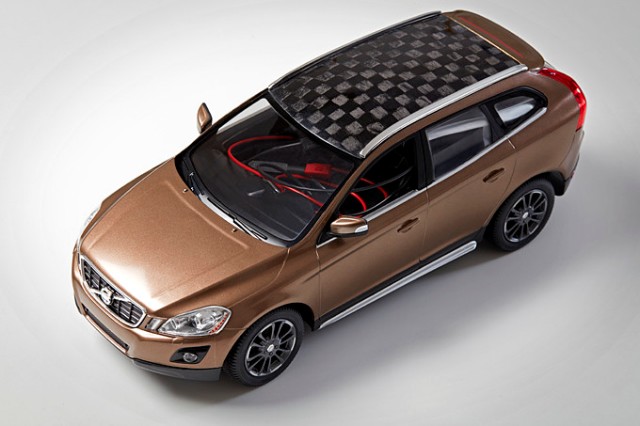Feb 10 2016
The world's first model car comprising wood-based carbon fiber roof and battery was produced by a group of Swedish researchers. Many decades ago, station wagons have wooden paneling; however, this was merely for aesthetics. The vision behind using wood in this current research is to decrease vehicle weight using renewable materials.
 This model car's carbon fiber roof and battery electrodes are made with wood.
This model car's carbon fiber roof and battery electrodes are made with wood.
For now, this unique wood-based carbon fiber car is made to the scale of a toy, and is a prototype representing huge progress towards accomplishing the goal of using novel lightweight materials from nature, which is one of the advantages of a bio-economy.
The demo with the toy car is a collaborative project of KTH Royal Institute of Technology, Swerea, a research group for industrial renewal and sustainable development, and the Swedish researcher institute Innventia.
Lignin is the main ingredient in the carbon fiber composite. Lignin is a component of the cell walls of most plants found on dry land. It is also the world’s second most copious natural polymer after cellulose.
Göran Lindbergh, Professor of Chemical Engineering at KTH, states that the idea for using wood lignin as an electrode material came from an earlier study he was involved in at Innventia. It is possible to produce lignin batteries from renewable raw materials, in this case, the byproduct procured from paper pulp production.
The lightness of the material is especially important for electric cars because then batteries last longer. Lignin-based carbon fiber is cheaper than ordinary carbon fiber. Otherwise batteries made with lignin are indistinguishable from ordinary batteries.
Göran Lindbergh, Professor of Chemical Engineering at KTH
He adds that gradually, carbon fiber batteries and bodywork can be integrated to store electrical energy and manage mechanical loads at the same time.
This study is a part of Bioinnovation, a strategic innovation program collaborated by Formas, Vinnova, and the Swedish Energy Agency.